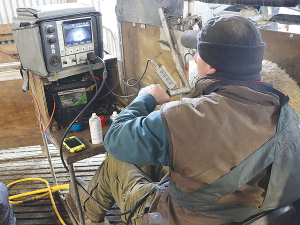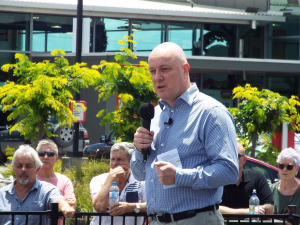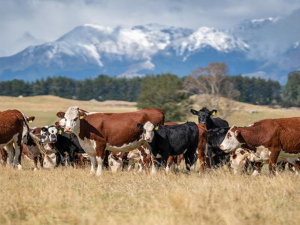Having the ability to target feed ewes that will offer the best return on investmnt is one of the main benefits of pregnancy scanning - but there are others.
Massey University's Professor Paul Kenyon says pregnancy scanning data can be used to maximise ewe and lamb survival. He explains in a B+LNZ podcast that scanning should be carried out a minimum of 45 days after the ram has been removed. After 100 days it is difficult for the scanner to determine how many lambs each ewe is carrying.
Scanners can identify singles, twins, triplets (or just multiples) and early and late lambing ewes. This information enables farmers to strategically feed and manage ewes to maximise both ewe and lamb survival and pre-weaning lamb growth rates. Scanning is also an ideal time to body condition score each ewe as she is moved into the scanning crate.
Kenyon points out that for multiple-bearing ewes, there is only a small window when body condition can be increased. After that, it becomes physically impossible for her to gain condition because of the demands of pregnancy.
"Grazing herbage, most twin and triplet-bearing ewes cannot physically eat enough to meet their theoretical requirements, so the ewe needs to use her fat and she needs to have some fat to use."
In the last 30-40 days of pregnancy, the foetus grows rapidly, so in a triplet-bearing ewe, the total pregancy weight (foetus and placenta) at the point of lambing is 20-22kg. A ewe cannot eat enough feed to sustain her metabolic needs in late pregnancy, which is why triplet lambs are typically small, thin and lack vigoue.
"This is why feeding in early to mid-pregnancy is so vital," Kenyon says.
On day 120 after the ram has gone out, some ewes will be 120 days pregnant and some will be 69-days pregnant and their nutritional needs will be very different.
"So why feed them the same?"
Kenyon explains that knowing how many lambs a ewe is carrying can also inform the selection of lambing paddocks based on shelter and topography. Shelter is a critical factor in multiple lamb survivability and a gradient of over 30 degrees will significantly increase the chance of separation in multiples so should be avoided.
Identifying early lambing ewes will allow these ewes to be set-stocked in paddocks which can then be a focus of attention over their lambing period.
"It allows more intensive management if that's what you choose."
Paddocks with higher pasture covers can be used for multiple-bearing ewes in poorer condition. Stocked at a lower stocking rate, these higher covers will enhance lamb survival and allow ewes to partition feed into their own reserves in late lactation.
If paddocks are set-stocked with only multiple-bearing ewes, replacement ewe lambs can just be selected from those paddocks, as these are the most fecund ewes.
If individual paddocks are set-stocked with ewes that are known to carry only singles, only twins or only triplets, it allows reasonably accurate lamb survival data to be collected from each paddock at tailing. Combined over a few years, this data will highlight which paddocks have the best lamb survival rates.
This allows informed decisions to be made about which ewes go into which paddocks at lambing.
Kenyon says in high performance flocks, where 80-90% of ewes are carrying mutiples, the value of scanning could be questioned, but there is still benefit in knowing which are the early and late lambing ewes.
Second and third cycle ewes can be maintained on a rotation while the focus goes on the early lambing ewes.
"At day 120, some ewes will be 120 days pregnant and others will be 69 days pregnant. Their nutritional needs are very different so why feed them the same?"
Kenyon stresses that strategic management doesn't mean having multiple mobs. Rather it's about using scanning and body condition data to determine which ewes need to be in which mob.
"These are tools that allow informed decision-making."
For more info listen to the BLNZ podcast: https://beeflambnz.com/knowledge-hub/podcast/use-ewe-pregnancy-diagnosis-scanning-information-professor-paul-kenyon-massey











